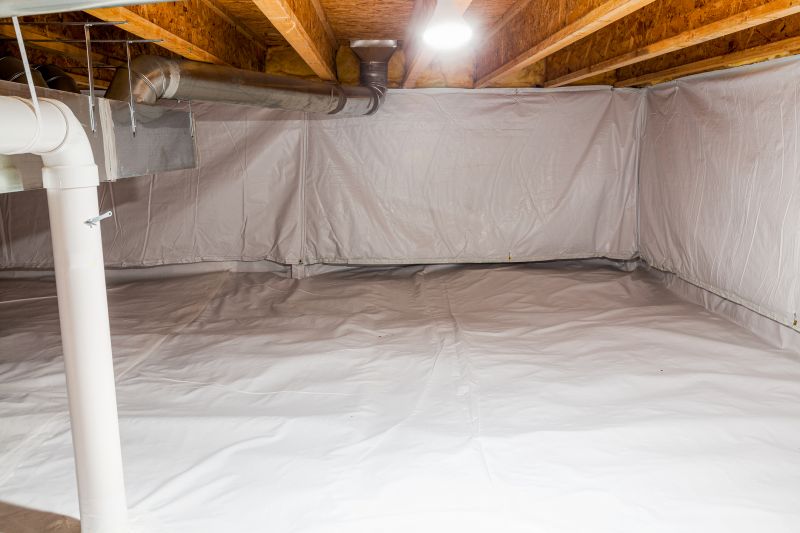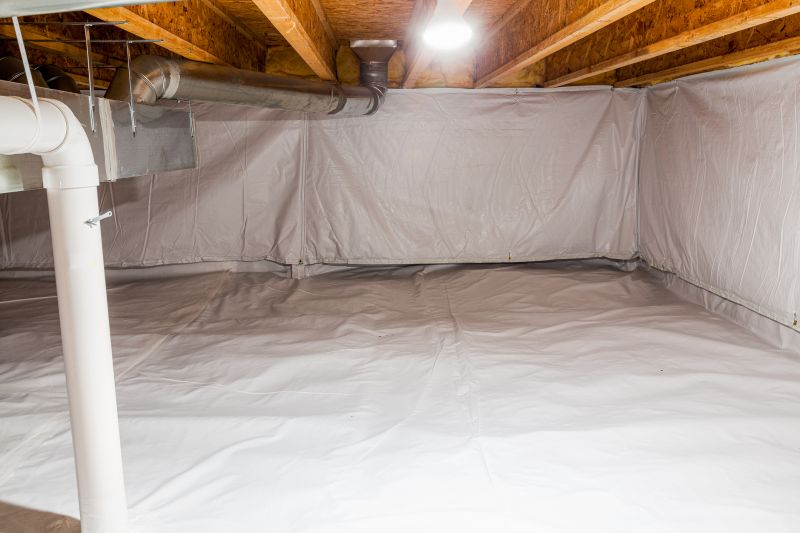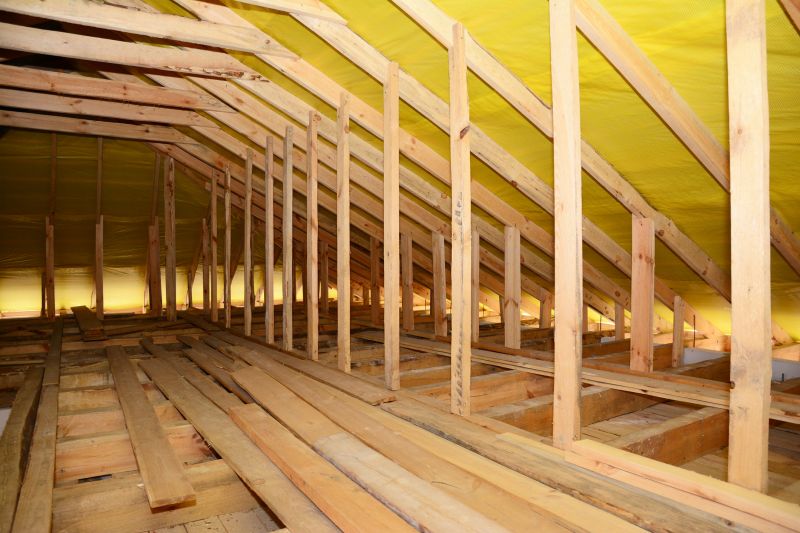Get Vapor Barrier Installation in Dripping Springs, TX
Vapor barrier installation services help Dripping Springs property owners prevent moisture problems and mold in basements, crawl spaces, and new construction projects by working with experienced local contractors.
Property owners in Dripping Springs, TX, who are planning renovation or construction projects often consider vapor barrier installation as a key step in ensuring a durable and comfortable building environment. Properly installed vapor barriers can help control moisture levels, prevent mold growth, and protect structural components from water damage-important factors in the region’s climate. Exploring options for this work allows property owners to compare local contractors who specialize in moisture management solutions, helping them make informed decisions for their projects.
By reviewing the services offered by local contractors, property owners can find experienced professionals capable of handling vapor barrier installation tailored to the unique needs of properties in Dripping Springs. Whether upgrading an existing space or preparing a new construction, understanding available options can support effective planning and help ensure the work aligns with project goals. Continuing to explore local service providers provides a clearer picture of what’s possible for moisture control and building protection in the area.
- Basement Renovations - Vapor barrier installation may be needed to prevent moisture issues during basement finishing projects in neighborhoods around Dripping Springs, TX.
- Foundation Repairs - When addressing foundation concerns caused by excess moisture or water intrusion, local contractors can install vapor barriers to improve stability.
- Crawl Space Encapsulation - Homeowners in nearby communities seeking to control humidity and prevent mold often turn to service providers for vapor barrier installation.
- New Construction - Builders incorporate vapor barriers during the framing stage of new homes in areas with high humidity or frequent rain.
- Waterproofing Projects - For properties experiencing water seepage or dampness, local contractors can install vapor barriers as part of comprehensive waterproofing solutions.



Vapor barrier installation involves placing a specialized material, typically a plastic or foil sheet, in areas where moisture buildup can cause problems. This barrier is installed on floors, walls, or ceilings to prevent moisture from passing through and condensing into water. Proper installation helps protect the structural integrity of a property by reducing the risk of wood rot, mold growth, and other moisture-related issues that can compromise the building’s stability over time. Homeowners in areas with high humidity or frequent moisture exposure often find vapor barriers to be an effective way to maintain a dry and healthy indoor environment.
One of the main problems vapor barriers help address is excess moisture that can lead to mold and mildew development. When moisture seeps into walls or floors, it creates the perfect environment for mold spores to thrive, which can cause health concerns and unpleasant odors. Additionally, moisture infiltration can damage insulation, reduce energy efficiency, and cause materials like drywall or wood to warp or rot. Installing a vapor barrier acts as a preventative measure, blocking moisture from penetrating interior spaces and helping to maintain a cleaner, safer home.
Vapor barrier services are commonly used in a variety of property types, including residential homes, basements, crawl spaces, and garages. Homes in regions with high humidity or frequent rainfall benefit from vapor barriers to control moisture levels effectively. Commercial properties, especially those with underground or below-grade spaces, also often require vapor barriers to prevent moisture intrusion that could damage stored goods or equipment. This service is suitable for any property where moisture control is a concern and can be tailored to meet the specific needs of different building types and environments.
Homeowners who notice signs of moisture problems, such as damp walls, musty odors, or mold growth, should consider vapor barrier installation as part of their property maintenance. It is also recommended for properties undergoing renovations or improvements that involve insulation or foundation work. By working with experienced local contractors, homeowners can ensure that the vapor barrier is installed correctly and effectively, providing long-term protection against moisture-related issues. This service offers a practical solution for maintaining a dry, healthy living space in a variety of properties.
The overview below groups typical Vapor Barrier Installation projects into broad ranges so you can see how smaller, mid-sized, and larger jobs often compare in Dripping Springs, TX.
In many markets, a large share of routine jobs stays in the lower and middle ranges, while only a smaller percentage of projects moves into the highest bands when the work is more complex or site conditions are harder than average.
Smaller Repairs - Typical costs for minor vapor barrier repairs or patchwork in residential spaces range from $250-$600. Many routine jobs fall within this range, depending on the size and complexity of the area needing work.
Full Installation - Complete vapor barrier installation in a standard basement or crawl space usually costs between $1,000 and $2,500. Local contractors often perform projects in this range for average-sized areas.
Large or Complex Projects - Larger or more intricate vapor barrier replacements, such as in commercial buildings or extensive renovations, can reach $5,000 or more. Fewer projects fall into this highest tier, typically involving additional preparation or custom solutions.
Variable Factors - Costs can vary based on factors like the size of the space, material quality, and site accessibility. Local service providers can provide specific estimates tailored to each project's scope and conditions.
Actual totals will depend on details like access to the work area, the scope of the project, and the materials selected, so use these as general starting points rather than exact figures.
Basement Waterproofing - involves installing vapor barriers to prevent moisture intrusion, requiring similar planning and sealing techniques as vapor barrier installation.
Concrete Floor Coating - requires surface preparation and moisture control methods that align with vapor barrier installation skills and tools.
Crawl Space Encapsulation - includes sealing and insulating crawl spaces, often utilizing vapor barriers to improve moisture management and energy efficiency.
Insulation Installation - involves selecting and installing appropriate materials in areas where vapor barriers are also used to control moisture and temperature.
Foundation Waterproofing - focuses on protecting foundations from water penetration, employing similar waterproofing techniques as vapor barrier installation.
Garage Floor Coatings - requires surface preparation and moisture mitigation strategies akin to those used in vapor barrier projects for durable finishes.

When evaluating potential service providers for vapor barrier installation, it’s important to consider their experience with similar projects in the Dripping Springs area or nearby communities. Homeowners should inquire about the types of properties they have worked on and whether they are familiar with the specific challenges that can arise in local construction conditions. A contractor’s history of handling projects comparable in size and scope can provide insight into their familiarity with best practices and their ability to deliver quality results.
Clear, written expectations are a key component of a successful vapor barrier installation. Homeowners should seek service providers who can provide detailed descriptions of their proposed work, including the materials they plan to use and the steps involved. Having this information in writing helps ensure everyone is aligned on the scope of work and can serve as a reference throughout the project. This transparency can also make it easier to compare different contractors and identify those who prioritize clarity and professionalism.
Reputable references and effective communication are essential when choosing local contractors for vapor barrier installation. Homeowners are encouraged to ask for references from previous clients who had similar work done and to follow up with those references to learn about their experiences. Good communication from the service provider, including prompt responses to questions and a willingness to discuss project details, can make the process smoother and help build confidence in their ability to meet expectations. It’s important to work with professionals who are responsive and transparent, ensuring that the project proceeds with mutual understanding and trust.
Property owners in Dripping Springs, TX use Vapor Barrier Installation services for practical projects around their homes and businesses. This guide focuses on everyday jobs and straightforward project options.


Vapor barrier installation is often needed in Dripping Springs homes to prevent moisture from seeping into basements, crawl spaces, or under flooring. Property owners may seek out local contractors when they notice signs of excess humidity, mold growth, or musty odors that can develop in these areas. Installing a vapor barrier can help improve indoor air quality and protect the structural integrity of a property by reducing moisture buildup.
Homeowners in the area might also look for vapor barrier services when preparing a property for renovations or repairs, especially if there has been water intrusion or flooding. Local service providers can assist in creating a dry, stable environment that minimizes future issues caused by moisture. Whether for new construction or existing structures, property owners can contact local contractors to explore options for effective vapor barrier solutions suited to the unique needs of homes in Dripping Springs.
What is a vapor barrier and why is it important? A vapor barrier is a material installed to prevent moisture from passing through floors, walls, or ceilings, helping to reduce mold and structural damage in buildings.
Where can vapor barriers be installed in a property? Vapor barriers are typically installed in basements, crawl spaces, and under concrete slabs to control moisture levels and improve indoor air quality.
What types of vapor barrier materials are available? Common options include polyethylene sheets, foil-backed membranes, and vapor-retardant paints, each suitable for different applications and environments.
How do local contractors determine the best vapor barrier for a project? They evaluate factors like the building’s structure, moisture sources, and climate conditions to recommend the most effective vapor barrier solution.
What are signs that a vapor barrier might be needed? Signs include persistent dampness, mold growth, musty odors, or moisture stains on walls and floors indicating moisture infiltration issues.
Moisture Control in Basements - Installing a vapor barrier can help prevent ground moisture from seeping into basement spaces, reducing mold growth and improving indoor air quality.
Attic Insulation Enhancement - Adding a vapor barrier in the attic can improve energy efficiency by controlling moisture and preventing heat loss through the roof.
New Construction Projects - Incorporating vapor barriers during new building projects ensures proper moisture management from the start, protecting structural integrity over time.
Crawl Space Protection - Service providers can install vapor barriers in crawl spaces to reduce humidity levels, prevent wood rot, and improve overall home durability.

If you are thinking about Vapor Barrier Installation for a property in Dripping Springs, TX, this guide is meant to help you understand the work, the typical project types, and how different options might fit your plans.
When you are ready, you can use the quote form on this page to share a few details about your project. From there, local pros can review the basics and respond with options that match what you have in mind.
